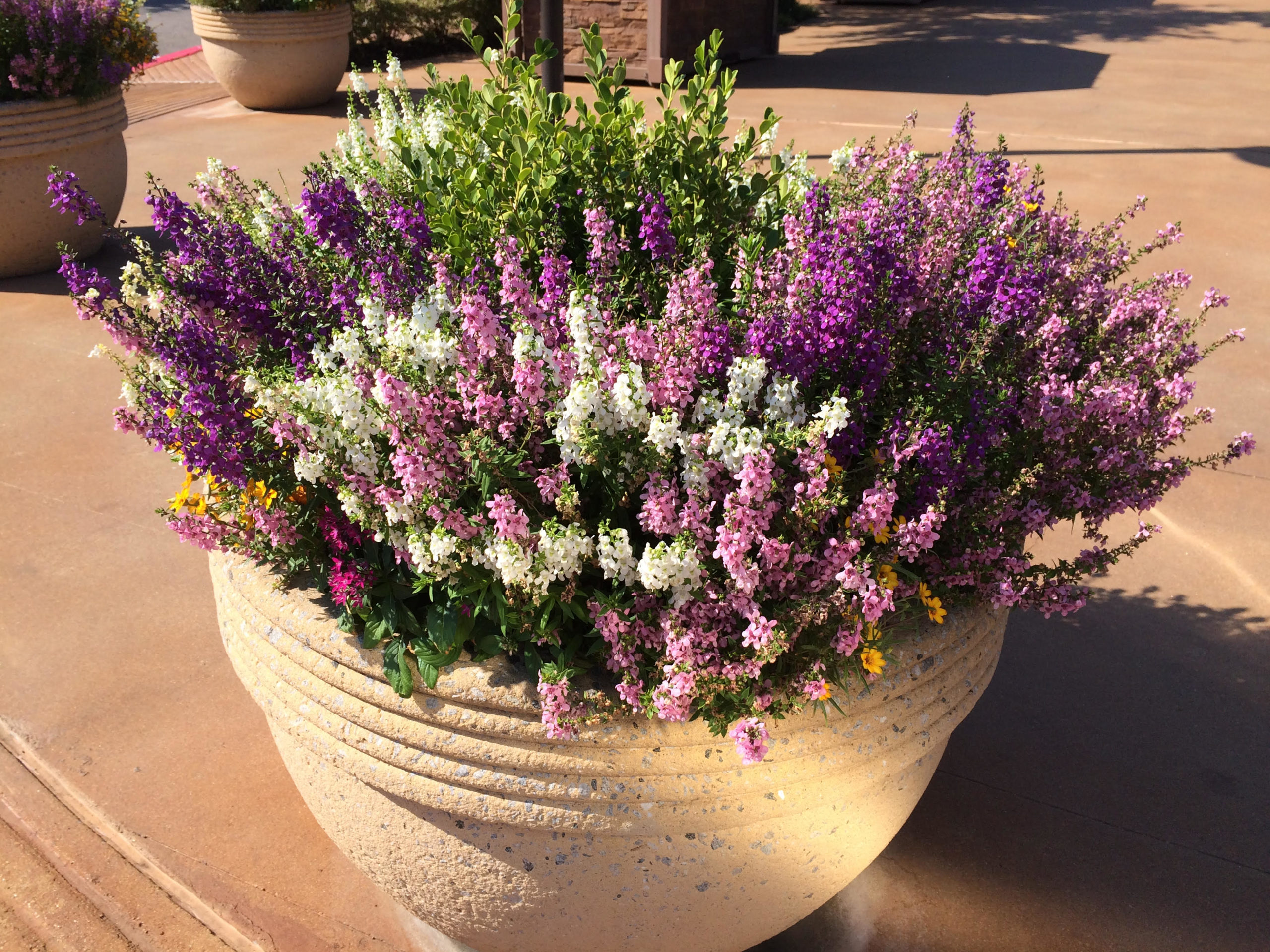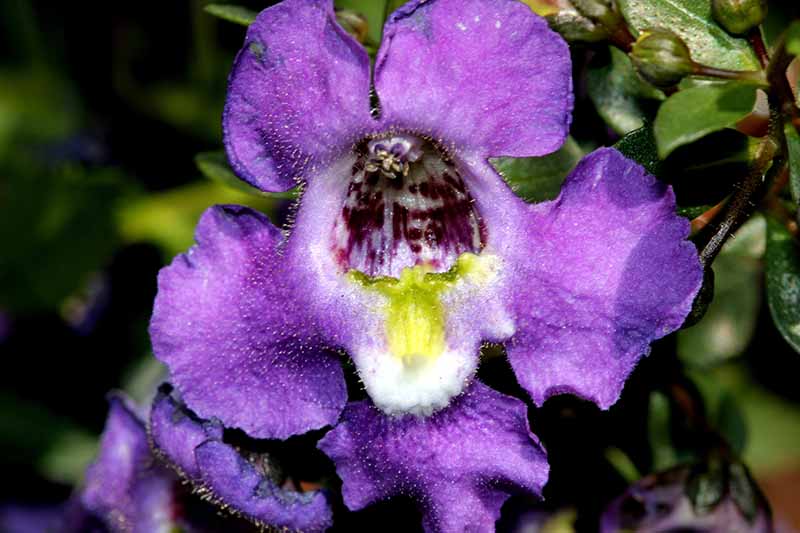Angelonia Flowers: The Perfect Summer Blooms
Angelonia Flowers: The Perfect Summer Blooms
Angelonia flowers are a popular choice for summer gardens because of their long blooming period, heat tolerance, and low maintenance requirements. These versatile plants can be grown in a variety of settings, from sunny borders to shady containers.
In this blog post, we will discuss the following:
- The different types of angelonia flowers
- How to grow and care for angelonia plants
- How to use angelonia flowers in your garden
Let's get started!
Types of Angelonia Flowers
There are many different varieties of angelonia flowers, each with its own unique color and flower shape. Some of the most popular varieties include:
- Angelonia grandiflora: This variety produces large, trumpet-shaped flowers in shades of white, pink, purple, and blue.
- Angelonia angustifolia: This variety has smaller, tubular flowers in shades of white, pink, and purple.
- Angelonia hybrida: This variety is a cross between Angelonia grandiflora and Angelonia angustifolia. It produces flowers in a wide range of colors, including white, pink, purple, blue, and red.
How to Grow and Care for Angelonia Plants
Angelonia plants are relatively easy to grow and care for. They prefer full sun and well-drained soil. Water angelonia plants regularly, especially during hot weather. Fertilize angelonia plants every few weeks with a balanced fertilizer.
Angelonia plants are relatively pest- and disease-resistant. However, they may be susceptible to aphids, whiteflies, and spider mites. If you notice any pests on your angelonia plants, you can treat them with insecticidal soap or neem oil.
How to Use Angelonia Flowers in Your Garden
Angelonia flowers can be used in a variety of ways in your garden. They can be planted in borders, beds, or containers. They can also be used to fill in gaps in your garden or to add color to walkways or patios.
Angelonia flowers can be mixed with other flowers, such as petunias, marigolds, or geraniums. They can also be used as a backdrop for other plants, such as shrubs or trees.
Angelonia flowers are a versatile and easy-to-grow plant that can add color and life to your garden. With their long blooming period and heat tolerance, angelonia flowers are a perfect choice for summer gardens.
Angelonia flowers are a beautiful and versatile addition to any garden. They come in a wide range of colors, including purple, pink, blue, and white, and they can be grown in both sun and shade. Angelonias are also relatively low-maintenance plants, making them a great choice for busy gardeners.
If you're interested in learning more about angelonia flowers, I suggest visiting Garden Wiki. This website has a wealth of information on angelonias, including how to grow them, how to care for them, and how to choose the right variety for your garden.
In addition to providing detailed information on angelonias, Garden Wiki also features beautiful photos of these flowers. These photos can help you visualize how angelonias would look in your garden.
I hope you'll visit Garden Wiki to learn more about angelonia flowers. These beautiful and easy-care plants are sure to add a touch of color and life to your garden.
FAQ of angelonia flowers
- What are angelonia flowers?
Angelonia flowers are also known as summer snapdragons. They are native to tropical and subtropical regions of the Americas. Angelonia flowers are characterized by their tubular, spiky blooms that come in a variety of colors, including blue, pink, purple, and white. They are a popular choice for summer gardens because they are heat-tolerant and drought-resistant.
- How do I care for angelonia flowers?
Angelonia flowers are relatively easy to care for. They prefer full sun and well-drained soil. They should be watered regularly, but not too much, as they are susceptible to root rot. Angelonia flowers can be fertilized every few weeks with a balanced fertilizer. They can be pruned to encourage bushy growth.
- How do I propagate angelonia flowers?
Angelonia flowers can be propagated by seed or by cuttings. To propagate by seed, sow the seeds indoors 6-8 weeks before the last frost. To propagate by cuttings, take 4-6 inch cuttings from healthy plants in the spring or summer. Plant the cuttings in a well-draining potting mix and keep them moist until they have rooted.
- What are some pests and diseases that can affect angelonia flowers?
Angelonia flowers are susceptible to a few pests and diseases, including aphids, spider mites, whiteflies, and powdery mildew. Aphids, spider mites, and whiteflies can be controlled with insecticidal soap or neem oil. Powdery mildew can be controlled by watering the plants regularly and avoiding overhead watering.
- What is the meaning of angelonia flowers?
The meaning of angelonia flowers varies depending on the color. Blue angelonia flowers are said to symbolize love, while pink angelonia flowers are said to symbolize happiness. Purple angelonia flowers are said to symbolize royalty, while white angelonia flowers are said to symbolize purity.
Image of angelonia flowers
- Angelonia in full bloom. The flowers are a vibrant purple color and they bloom in clusters. The plant is also known as summer snapdragon or Mexican petunia.
- Angelonia in a pot. This plant is perfect for container gardening. It can be grown indoors or outdoors.

- Angelonia in a garden bed. This plant can be used to add color to your garden. It can be grown in full sun or partial shade.
- Angelonia close-up. This photo shows the beautiful details of the Angelonia flower. The petals are delicate and the color is very vibrant.

- Angelonia in a vase. This photo shows how Angelonia flowers can be used to decorate your home. They can be cut and placed in a vase to enjoy indoors.

Post a Comment for "Angelonia Flowers: The Perfect Summer Blooms"